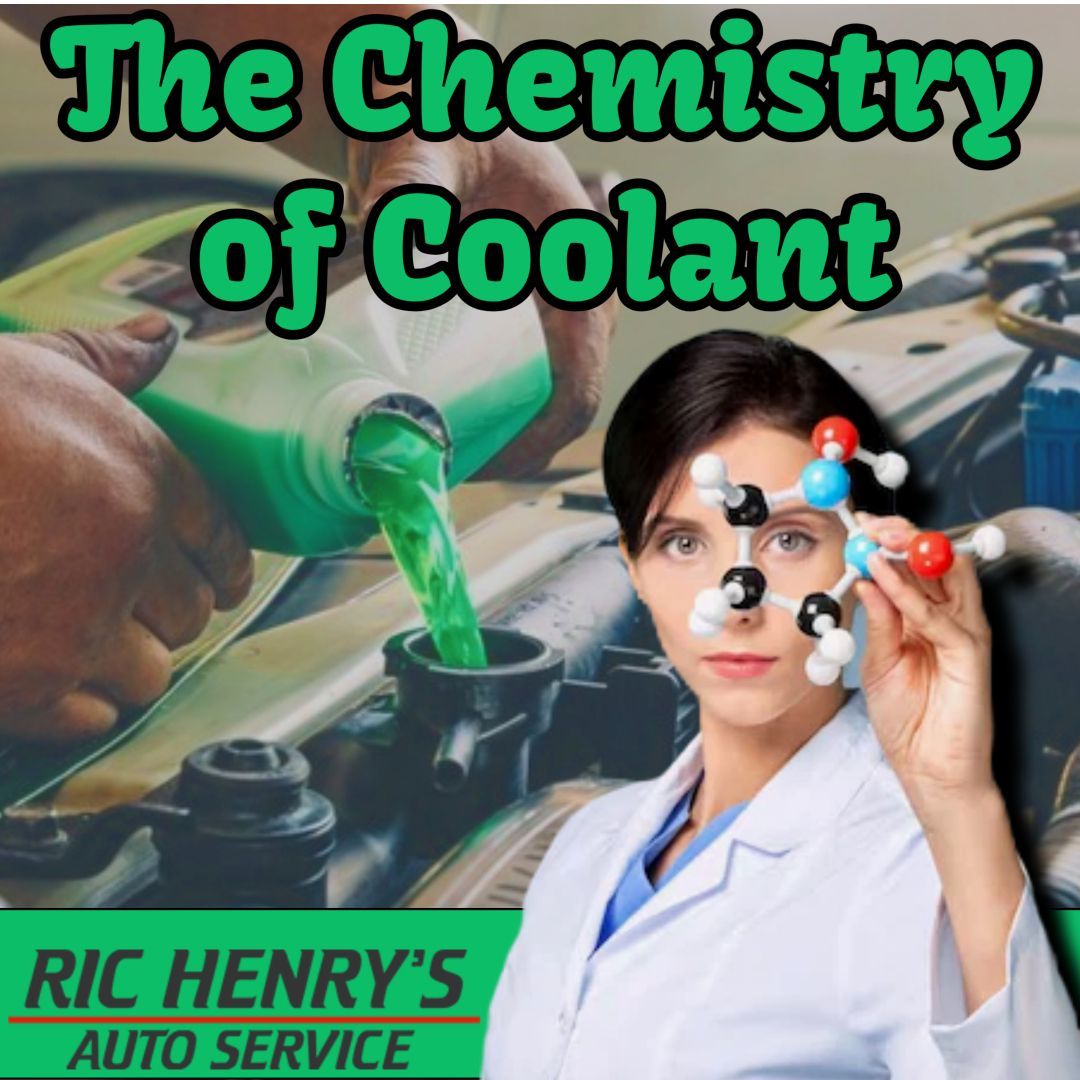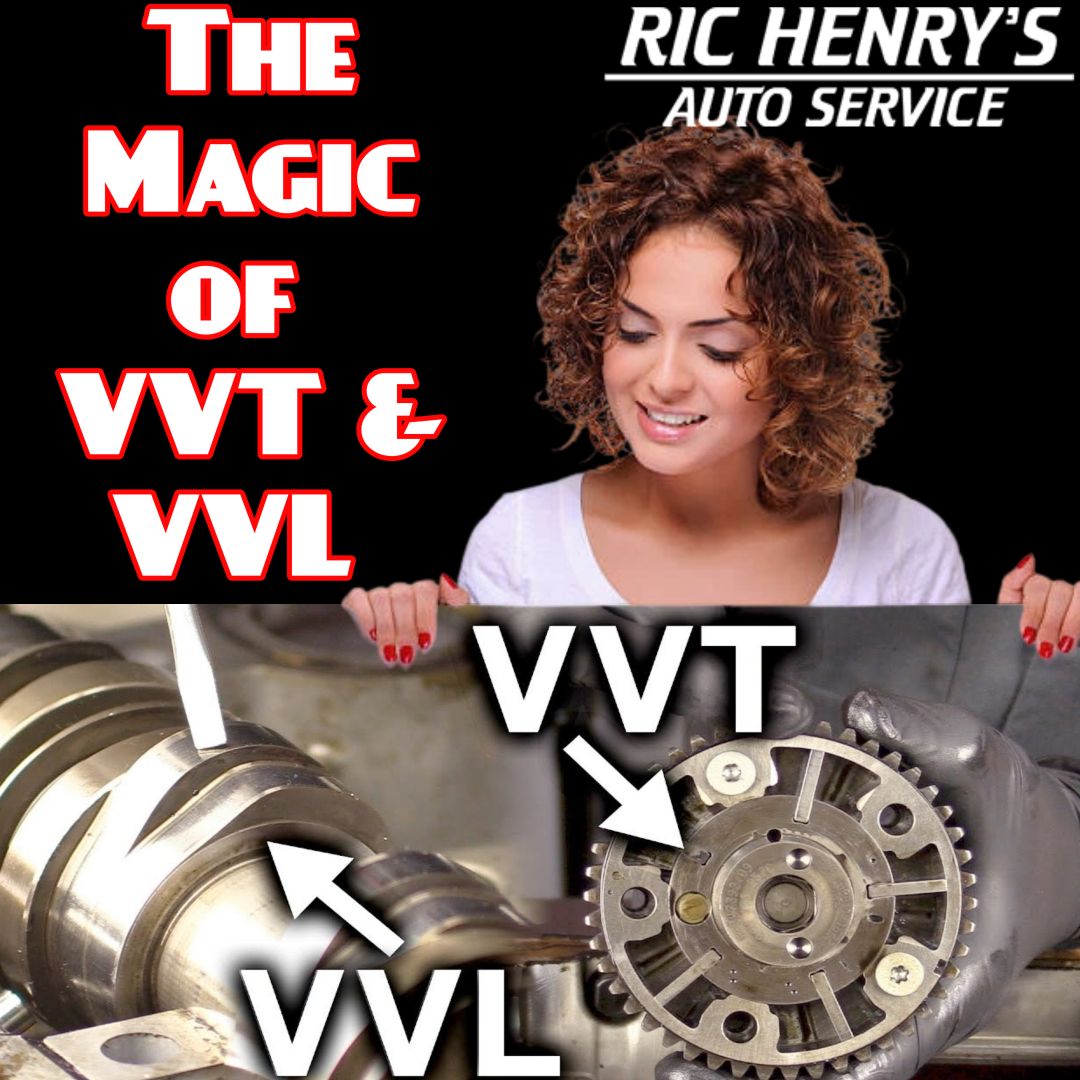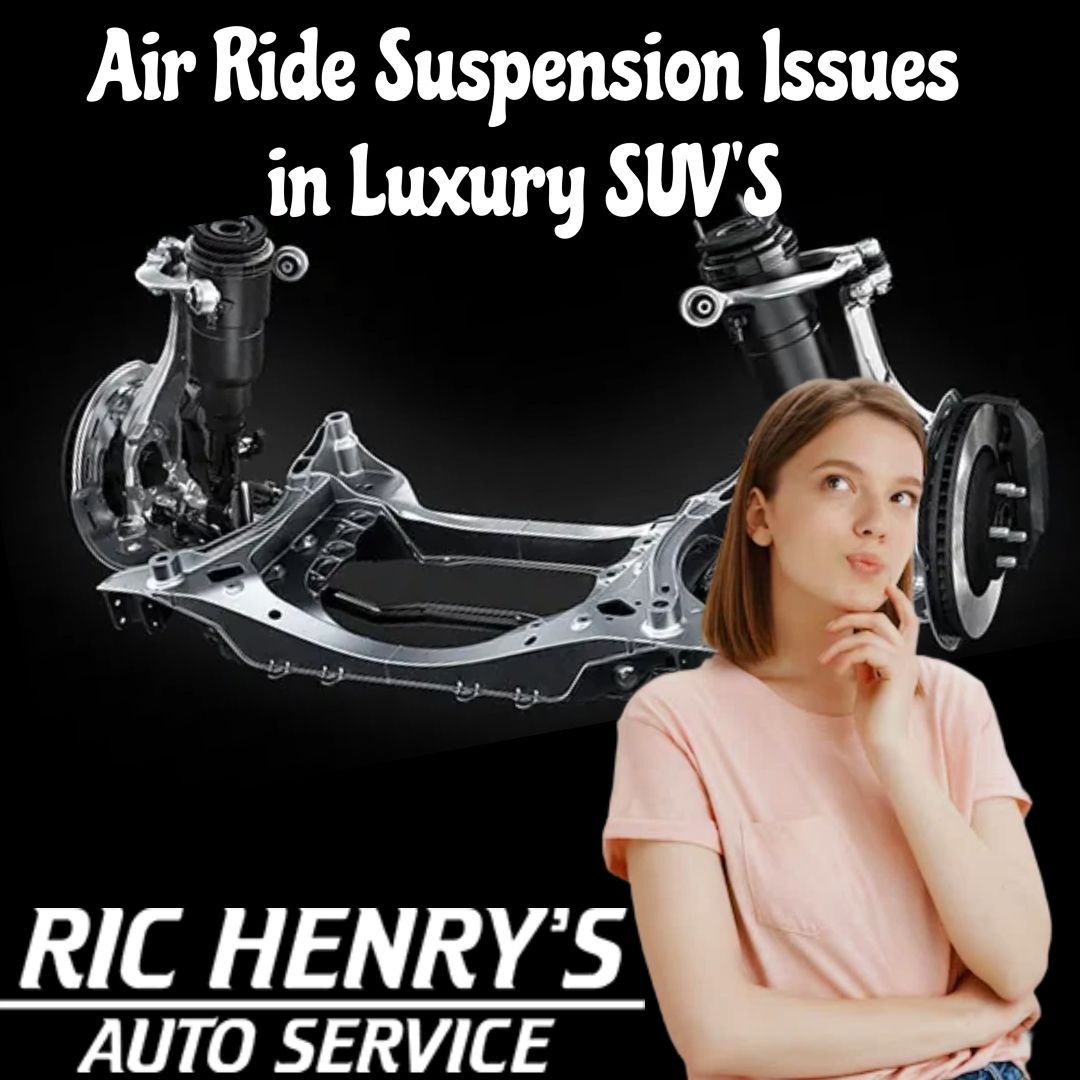The Chemistry of Coolant:
NaTasha Brand • November 3, 2025
Your Engine's Invisible Bodyguard

Here in San Angelo, we know a thing or two about heat. While we’re seeking shade, our car engines are facing a relentless, internal inferno. Combustion can spike temperatures north of 4,500°F. Without a superhero in the system, metal would warp, seals would melt, and your engine would surrender in a cloud of steam before you even reached the Red Arroyo Trail.
That superhero is your coolant. But it’s so much more than just "anti-freeze." It's a complex, chemically-engineered liquid designed for one critical mission: managing thermal chaos. Today, we're popping the hood on the periodic table to explore the secret life of coolant.
Beyond Water: The Triple Threat of Coolant
Water is an excellent heat absorber, but it's a terrible standalone coolant. It freezes, it boils, and it’s a master of corrosion. Modern coolant is a sophisticated cocktail that solves all three problems.
The Temperature Moderator (Glycol):
This is the base of the mix. Ethylene or Propylene Glycol radically alters the physical properties of water. In our Texas "winters," it lowers the freezing point, preventing your engine block from cracking. More importantly for us, it significantly raises the boiling point, so your coolant doesn't vaporize into a useless gas on a 105°F day.
The Liquid Heat Sink (Water):
Yes, it's still in the mix! Deionized or distilled water is used because of its unparalleled ability to absorb and transport heat away from the engine cylinder walls and over to the radiator, where that brutal San Angelo breeze can carry it away.
The Mighty Hero (The Inhibitor Package):
This is where the real magic happens. This is the "chemistry set" that makes coolant a smart fluid. And it's the part that wears out.
The Invisible Shield: Corrosion Inhibitors and Their Sad, Short Lives
Your engine is a metallurgic mosaic: aluminum heads, iron blocks, copper brass radiators, and steel pipes. Plunge these different metals into a bath of hot, electrically conductive water, and you've created a perfect battery, one that literally eats itself from the inside out through galvanic corrosion.
The inhibitor package is a sacrificial shield. Its components, like silicates, phosphates, and organic acids, work in two key ways:
Passivation:
They form an invisible, protective chemical layer on metal surfaces. Think of it like a non-stick Teflon coating for your engine's internals, preventing corrosive elements from making contact.
Scavenging: They act as chemical sponges, neutralizing acidic by-products of combustion and breakdown that inevitably contaminate the system.
But here’s the critical part: This shield depletes.
These heroic inhibitor molecules are constantly being used up in the line of duty. They sacrifice themselves to protect your engine. Over time, typically 2-5 years, the concentration drops below the level needed for effective protection. The coolant may still be green or orange, but its superpowers are gone. This is why you can't just "top it off" forever.
The Consequences of a Depleted Shield
When the inhibitors are exhausted, chemistry takes its cruel course:
Scale & Scale:
Corrosion products form a crusty, insulating scale on engine surfaces. This is like putting a winter coat on your engine, it can't shed heat, leading to overheating.
Galvanic Corrosion:
Without the protective layer, your aluminum cylinder heads and intake manifolds begin to pit and corrode. This can lead to costly repairs and even head gasket failure.
Cavitation Erosion:
In a diesel engine, this is a particularly nasty issue where imploding bubbles can literally eat holes through cylinder walls.
Why a Coolant Flush at Ric Henry's Auto Service is Non-Negotiable
A coolant flush isn't just an "drain and refill." It's a complete system rejuvenation. At Ric Henry's Auto Service, we don't just guess. We use the same advanced tools and equipment as the dealership to ensure the job is done right.
This service is performed by our experienced technicians who understand that in San Angelo, your cooling system isn't a luxury, it's a necessity. And we back all our work with a 3-year/36,000-mile warranty for your peace of mind.
So, the next time you see your coolant reservoir, remember the intense chemical battle happening within. It's not just liquid; it's your engine's invisible bodyguard, and even bodyguards need to retire.
Don't let a chemistry experiment gone wrong cook your engine. Trust the pros at Ric Henry's Auto Service to keep your coolant, and your car, cool under West Texas pressure.


Let’s talk about one of your car's most dramatic performers: the brake caliper. This unsung hero doesn’t get the glamour of a shiny new paint job or the roar of a powerful engine, but when it decides to throw a tantrum, you’ll know all about it. Especially when you’re cruising down the Houston Harte or trying to beat the light on Bryant Blvd., a sticking brake caliper isn’t just an annoyance, it’s a safety hazard and a wallet-drainer. Today, we’re diving deep into the world of the sticky caliper. We’ll cover what it is, how to spot its cry for attention, and what to do when it happens here in San Angelo. The Unlikely Hero: What Does a Brake Caliper Actually Do? Think of your brake system as a symphony. You press the pedal (the conductor), and a series of events unfold. Hydraulic fluid (the music) travels through the lines, and its pressure commands the brake caliper to act. The caliper itself is a relatively simple but crucial clamp. It straddles your brake rotor (that shiny, silver disc you can sometimes see behind your wheel) and contains two key components: 1. The Piston: Forced out by the brake fluid pressure when you press the pedal. 2. The Brake Pads: The friction material the piston squeezes against the rotor. When you hit the brake, the piston pushes the brake pads onto the spinning rotor, creating immense friction and converting your car’s kinetic energy into heat, thereby slowing you down. It’s a brilliant, violent, and essential process. The Tantrum: Tell-Tale Signs Your Caliper is Sticking A "sticking" caliper is one that either doesn’t fully release the brake pad from the rotor when you let off the pedal, or it fails to apply pressure evenly. Here’s how it announces its presence: 1. The Car Pulls to One Side: This is the #1 giveaway. When braking, if your car consistently veers sharply to the left or right, it’s a strong indicator that the caliper on that side is sticking and applying more braking force than its counterpart. It’s like your car has a favorite side of the road. 2. The Distinctive Hot & Smelly Aroma: A sticking caliper is constantly creating friction, which means it’s constantly generating heat. After a normal drive, if you smell a sharp, acrid burning odor from one wheel (and we’re not talking about the scent of mesquite from the food trucks), that’s a red flag. Carefully approach the wheel and feel for intense radiant heat. Caution: Don't touch the wheel or rotor! 3. Unusual Grumbling or Dragging Noises: You might hear a constant, low-frequency grinding or rubbing sound that changes with your speed, even when your foot is off the brake. It’s the sound of your brake pad having an unwanted, permanent playdate with your rotor. 4. Your Fuel Economy Takes a Nosedive: Is your gas gauge dropping faster than usual? A stuck caliper is essentially like driving with your foot lightly on the brake all the time. Your engine has to work much harder to overcome that constant drag, burning more fuel in the process. 5. Uneven Brake Pad Wear or Excessive Dust: During a tire rotation or when you just happen to look, you might notice that the inner brake pad on one wheel is significantly more worn than the outer pad, or more worn than the pads on the other side of the car. You might also see more black brake dust on one wheel compared to the others. The Fix: From a Simple Slide to a Full Replacement So, your caliper is staging a sit-in. What now? • The Simple Fix (The Clean and Lube): Sometimes, the issue is just a stuck or corroded slide pin. These pins allow the caliper to float back and forth. A technician can clean and re-lubricate them with high-temperature grease, which often solves the problem. It’s the equivalent of giving the caliper a good talking-to. • The Common Fix (The Rebuild/Replacement): More often, the piston seal inside the caliper has deteriorated, or the piston itself is corroded. In this case, the caliper either needs to be rebuilt with a new seal and piston boot or, more commonly and reliably, replaced entirely with a new or quality remanufactured unit. This is almost always a job for a professional, as it involves the critical hydraulic brake system. Why Trust Ric Henry's Auto Service With Your Brakes in San Angelo? When your safety is on the line, you don’t trust your brakes to just anyone. At Ric Henry's Auto Service, we get it. We’re your neighbors, and we drive the same dusty, sun-baked roads you do. • Our experienced technicians are equipped to handle everything from a simple brake service to a complete caliper replacement, using the same premium tools and equipment the dealerships use. • We offer comprehensive auto repair services, so while we’re fixing your brakes, we can check your alignment, tires, and other critical systems to ensure everything is in top shape for West Texas driving. • Most importantly, we stand behind our work. Every service we provide comes with a robust 3-year/36,000-mile warranty for your peace of mind. Don't let a sticking caliper compromise your safety and cost you more in the long run. If you’re experiencing any of these symptoms, it’s time to stop by and see us.




Share On: